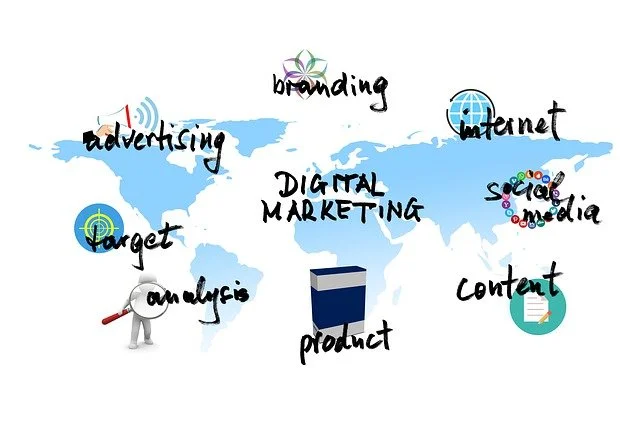Are you looking to create a brand online for your business, but you are still not completely satisfied with your brand’s image? Your brand image decides the future of your company. It is vitally important to dedicate time and attention to branding. After all, the internet is a place where competition flourishes. Finding a solid strategy to differentiate yourself from the rest is necessary.
Creating a brand online allows you to control your company’s image, and it creates a way for customers to find you. It also helps to create trust and credibility.
There are many ways to create a brand online. The most important thing is to be consistent with your image and message. Are you looking to establish your brand online? Well, look no further! This guide will teach you how to create a story that engages customers and builds brand loyalty.
Create a Brand Online: Brand Name
When you want to create a brand online, it is important to make sure that your name is professional, memorable, and communicates the essence of your company. You also want to make sure that the name is available as a domain name and trademark.
Tips for choosing a brand name
Here are some tips for choosing a brand name:
- Come up with a list of possible names: Brainstorm a list of potential names for your brand. You can come up with names on your own or ask your friends and family for ideas.
- Check the availability of the name: Before you settle on a name, make sure that it is available as a domain name and trademark. You can do a domain name search to see if the name is available, and you can contact an intellectual property lawyer to see if the name is trademarkable.
- Make sure the name is professional: The name of your brand should sound professional and established. Avoid playful or cutesy names.
- Make sure the name is memorable: The name of your brand should be easy to remember. You want people to easily say your name and remember it.
- Communicate the vision of your company: The name of your brand should communicate the essence of your company. It should be representative of what your company does and what it stands for.
- Go multilingual if required: If you plan to do business in other countries, make sure the name is available in other languages.
- Make sure it’s easy to spell: The name of your brand should be easy to spell. You don’t want people to struggle to spell your name correctly.
- Make sure the name is easy to say: The name of your brand should be easy to say. You want people to be able to say your name without stumbling.
- Make sure the name is unique: The name of your brand should be unique. You don’t want to compete with another company that has the same name.
- Test the name with people: Before you finalize a name, test it with friends and family. Ask them what they think of the name and if they would be likely to remember it.
Establish your Brand’s Story
Your story is what will set your brand apart from the rest. What is your brand’s purpose and its core values? What makes it unique? Once you have a clear understanding of your brand’s story, you can start to craft your messaging and marketing efforts around it. Here are the steps you’d take to create your brand’s story
Define your brand
First, you need to define your brand. What do you want your customers to think and feel about your brand? Once you have these answers, you can start creating your story.
Create a story arc
Your brand’s story should have a beginning, middle, and end. Consequently, it should also be consistent with your brand’s values and message. Start by outlining the main points of your story, and then fill in the details.
Engage customers
Your story should engage customers and encourage them to connect with your brand. You can do this by using emotional storytelling techniques, such as creating a strong character that customers can relate to.
Build loyalty
A good story will help you build loyalty among your customers. When customers feel emotionally connected to your brand, they’re more likely to become lifelong customers.
Keep it fresh
Your story shouldn’t be static. It should evolve and change over time, reflecting the growth and changes of your brand. This will keep customers engaged and interested in what you have to say.
Define your Target Audience
After you have your brand’s story, it’s important to know who you’re targeting with your branding efforts. Once you know your target audience, you can create content and messaging that speaks to them directly.
There’s no single way to define your target audience. It depends on many factors, including the product or service you are selling, the niche you are targeting, and the overall market. However, there are some things you can do to help you better understand your target audience:
Perform market research
This is probably the most important step, as it will give you an in-depth understanding of your target audience. This research can include things such as surveys, focus groups, interviews, and observational studies.
Segment your market
Not everyone in your target market is the same, and you can further segment them by factors such as age, gender, income, location, and interests.
Use demographics and psychographics
Demographics are the basic characteristics of your target audience, such as age, gender, and location. Psychographics, on the other hand, are the attitudes, values, and lifestyles of your target audience.
Look at your competition
Who are your main competitors? What are they selling? Who is their target audience? Perform some market analysis to see what you can learn about your target audience from your competition.
Create a strong social media presence
Social media is a key channel for branding. It’s a great way to reach your target audience and build a relationship with them. Be sure to create engaging content and use effective branding techniques to help your brand stand out.
There is no one-size-fits-all answer for creating a strong social media presence, but there are some general tips that can help.
First, make sure that your social media accounts are complete and up-to-date. Include a profile photo, cover photo, and bio that tells your story and helps people understand what you do.
Next, populate your social media accounts with interesting and engaging content. Share blog posts, images, and videos that will interest your followers, and be sure to interact with them regularly. Reply to comments and questions, and join conversations on relevant topics.
Finally, use social media to build relationships with other businesses and professionals in your industry. Share their content, collaborate on projects, and connect with them on social media. By following these tips, you can create a strong social media presence that will help you reach your target audience and grow your business.
Marketing Materials to Create a Brand Online
Creating marketing materials can be a lot of fun, but it also takes a lot of effort. The essential part is to know your audience and what will appeal to them. Once you know that, it’s all about finding the right design and wording to make your pitch irresistible. Canva is a great tool to start designing your marketing materials without any technical knowledge.
Here are some tips for creating marketing materials that will get you results:
Start with a great design
The look of your materials is just as important as the content. You want something that will stand out and catch people’s attention. Work with a graphic designer to create a style that is unique to your company and reflects your brand.
Write catchy headlines
Your headlines need to be interesting and grab people’s attention. Use strong verbs and adjectives to create a sense of urgency and excitement.
Keep it brief
People are busy and don’t want to read a lot of text. Keep your marketing materials succinct and to the point. Use bullet points and lists to break up the text and make it easy to read.
Tell a story to create a brand online
People love stories. Use your marketing materials to tell a story that will engage your audience and make them want to learn more.
Make it personal
People are more likely to respond to materials that are personalized. Address your audience directly and use their name whenever possible.
Use visuals
Images are a powerful tool and can be very effective in marketing materials. Use eye-catching visuals to capture people’s attention and support your message.
Develop a Strong Website
Your website is the cornerstone of your online presence. It’s where your target audience will go to learn more about your brand, and it’s where you’ll need to showcase your brand’s story and messaging. Make sure your website is well-designed and easy to navigate.
There are many important aspects to consider when creating or updating a website. The following are some tips for developing a strong website:
- Make sure the website is easy to use: The layout should be simple and intuitive, with clear navigation menus and links.
- Use high-quality images and graphics: Poor-quality images can make a website look unprofessional.
- Make sure the website is up-to-date: Regularly update the content and fix any broken links.
- Use strong security measures: Implement security measures such as firewalls and password protection.
- Use appropriate software: Make sure the website is designed using the latest web development technologies.
- Test the website: Be sure to test on different browsers and devices.
- Promote the website: Use online marketing techniques to promote the website online.
Use Effective Branding Techniques
There are a number of effective branding techniques you can use to help your brand stand out. Some of the most popular techniques include using a strong logo, developing a unique brand voice, and creating engaging content. Here are some SEO tools you’re need to make sure you appear online.
Therefore, we’re sharing a few key things you should remember when branding your business:
- Keep it consistent. Again, consistency is key! Make sure all of your marketing materials are on-brand and reflect your company’s values. Use the same logo, fonts, and colors across all of your marketing materials so that your branding is instantly recognizable.
- Make it memorable. Your branding should be something that people remember, so make sure it’s unique and creative.
- Stay relevant. Keep your branding updated to reflect the latest trends, and make sure it aligns with your company’s values.
- Be authentic. Make sure your branding is true to your company’s personality and voice.
Create a brand online: Conclusion
Ultimately, one of the most important things to remember when branding is to be consistent. Your brand’s story, messaging, and visuals should be consistent across all channels, so that your target audience knows what to expect from your brand.
If you want to create a brand online, it takes time and effort. However, once you’re there, it’s all worth it in the end. Follow these tips and you’re sure to create materials that will get your message across loud and clear.




